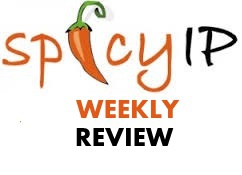 Our Highlight of the Week is Balaji’s post dealing with the fascinating and complex nexus between Trade Secret protection and the Right to Information, following up from his previous post on the case of Ferani Hotels v. State Information Commission and Ors. He discusses the dearth of High Court (and lack of Supreme Court) cases dealing with this issue, and then moves on to discussing certain specific, and curious, instances of these interactions. He discusses the trade secret protection available to Public Sector Undertakings, tender contracts, and finally, the disclosure of information about private enterprises collected by public authorities during their regulatory work. He then focuses on the question of the standard of Judicial Review that is allowed to a High Court where an executive agency makes a determination regarding trade secret protection under S. 8(1)(d) of the Right to Information Act, 2005.
Our Highlight of the Week is Balaji’s post dealing with the fascinating and complex nexus between Trade Secret protection and the Right to Information, following up from his previous post on the case of Ferani Hotels v. State Information Commission and Ors. He discusses the dearth of High Court (and lack of Supreme Court) cases dealing with this issue, and then moves on to discussing certain specific, and curious, instances of these interactions. He discusses the trade secret protection available to Public Sector Undertakings, tender contracts, and finally, the disclosure of information about private enterprises collected by public authorities during their regulatory work. He then focuses on the question of the standard of Judicial Review that is allowed to a High Court where an executive agency makes a determination regarding trade secret protection under S. 8(1)(d) of the Right to Information Act, 2005.
We started this week off with my post on the American case of Authors Guild v. Google, dealing with the copyright infringement challenges against Google’s Google Books program and Google’s claims of Fair Use against the same. I discuss the Court’s reasoning in finding Google’s actions to be protected under fair use, noting that the Court has on some issues stretched the boundaries of the American copyright doctrine, and for the better. I also note that the Fair Use victory in this case gives us the perfect platform for some introspection on what copyright is truly meant for, and what it is being used for.
Matthews followed this up with his post regarding the recent Draft Patent (Amendment) Rules, (2015), and their failure to address the inherent flaws in the information required to be disclosed under the current Form 27 from the perspective of public disclosures. He then discusses the value and meaning of professionalism, and points out the flaws in the current Form 27 against that standards.
This was followed by Kiran’s post regarding the Bombay HC decision on the ‘Indian Express’ trademark issue, dealing with a conflict between trademark registrations and a title registration under the Press Act. She discusses the Court’s reasoning as it found the acts of the defendant, who had the title registration under the Press Act, to be infringing of the plaintiff’s trademark. The Court deals with issues of harmonious construction, geographical limitations of protection, and the defendant’s argument that its paper was in a different language. She concludes the post by discussing whether a translation of a mark can still count as infringement.
International Developments